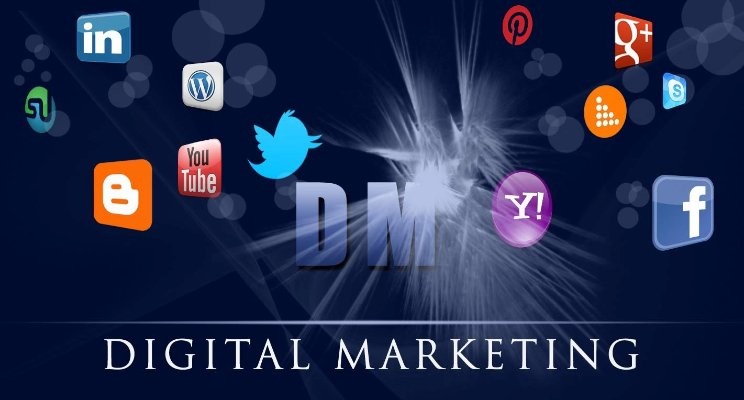In today’s digital landscape, the cloud has become an integral part of how businesses operate and individuals interact with technology. From storing data to running applications, the cloud offers unparalleled flexibility, scalability, and accessibility. However, navigating the cloud ecosystem can be complex, with various stakeholders playing crucial roles. In this comprehensive guide, we delve into the dynamics of the cloud ecosystem, focusing on three key entities: cloud consumers, direct consumers, and service providers.
Understanding the Cloud Ecosystem
Before delving into the intricacies of cloud consumers, direct consumers, and service providers, it’s essential to grasp the fundamentals of the cloud ecosystem. At its core, the cloud ecosystem comprises a network of interconnected services, infrastructure, and stakeholders that facilitate the delivery of cloud computing resources over the internet. These resources encompass a wide array of offerings, including computing power, storage, databases, networking, and software applications.
The cloud ecosystem typically operates on a multi-tenant model, where multiple users share the same infrastructure and resources, leading to cost efficiencies and resource optimization. Cloud services are typically categorized into three main models: Infrastructure as a Service (IaaS), Platform as a Service (PaaS), and Software as a Service (SaaS). Each model offers varying degrees of control, flexibility, and management responsibilities for consumers.
Cloud Consumers: Driving Demand for Cloud Services
Cloud consumers, also known as end-users or customers, form the backbone of the cloud ecosystem. These are individuals, organizations, or businesses that utilize cloud services to fulfill their computing needs, ranging from storing data to deploying applications. Cloud consumers come in various forms, including enterprises, small and medium-sized businesses (SMBs), government agencies, educational institutions, and individual users.
The motivations behind adopting cloud services vary depending on the specific requirements and objectives of each consumer. Some common drivers include cost savings, scalability, agility, geographic reach, disaster recovery, and enhanced collaboration. For enterprises, leveraging the cloud enables them to focus on their core competencies while outsourcing IT infrastructure management to specialized providers.
Cloud consumers interact with cloud services through various channels, including web portals, APIs (Application Programming Interfaces), command-line interfaces (CLIs), and mobile applications. They have the flexibility to choose from a wide range of cloud providers, each offering distinct features, pricing models, and service-level agreements (SLAs). Key considerations for cloud consumers include performance, reliability, security, compliance, vendor lock-in, and data sovereignty.
Direct Consumers: Enabling Intermediaries in the Cloud Marketplace
Direct consumers, also known as cloud intermediaries or resellers, occupy a unique position within the cloud ecosystem. Unlike end-users who directly consume cloud services for their own purposes, direct consumers act as intermediaries that facilitate the procurement, provisioning, and management of cloud services on behalf of end-users. These intermediaries play a vital role in simplifying the adoption process and adding value-added services to enhance the overall cloud experience.
Direct consumers come in various forms, including managed service providers (MSPs), cloud brokers, value-added resellers (VARs), system integrators, consultants, and independent software vendors (ISVs). They leverage their expertise, industry knowledge, and technical capabilities to assist end-users in selecting the right cloud solutions, optimizing resource utilization, managing cloud environments, and ensuring compliance with regulatory requirements.
The services offered by direct consumers encompass a wide spectrum, including cloud consulting, migration, integration, customization, optimization, monitoring, and support. By acting as trusted advisors, direct consumers help bridge the gap between cloud providers and end-users, ensuring smooth adoption, seamless operations, and maximum ROI (Return on Investment). They also play a crucial role in promoting interoperability and portability across heterogeneous cloud environments.
Service Providers: Powering the Cloud Infrastructure
Service providers form the backbone of the cloud ecosystem, responsible for designing, building, and maintaining the underlying infrastructure and platforms that enable cloud computing. These providers invest heavily in data centers, networking infrastructure, hardware, software, and operational expertise to deliver reliable, scalable, and high-performance cloud services to consumers worldwide. Service providers operate at different layers of the cloud stack, offering a diverse range of services tailored to specific use cases and industries.
At the infrastructure layer, leading service providers such as Amazon Web Services (AWS), Microsoft Azure, Google Cloud Platform (GCP), IBM Cloud, and Oracle Cloud provide foundational building blocks such as virtual machines, storage, networking, and container orchestration. These hyperscale cloud providers offer global reach, massive scalability, and a rich ecosystem of services to meet the diverse needs of cloud consumers across industries.
At the platform layer, providers like Heroku, Salesforce, Red Hat OpenShift, and Cloud Foundry offer development platforms and tools that streamline the deployment and management of applications in the cloud. These platforms abstract away the underlying infrastructure complexities, allowing developers to focus on writing code and delivering value to end-users rapidly.
At the software layer, Software as a Service (SaaS) providers deliver ready-to-use applications over the internet, catering to specific business functions such as customer relationship management (CRM), enterprise resource planning (ERP), human capital management (HCM), collaboration, productivity, and cybersecurity. Leading SaaS providers include Salesforce, Microsoft 365, Google Workspace, Adobe Creative Cloud, and Slack.
Service providers differentiate themselves based on factors such as performance, reliability, security, compliance, pricing, geographic presence, service-level agreements (SLAs), and ecosystem partnerships. They continually innovate and invest in cutting-edge technologies such as artificial intelligence (AI), machine learning (ML), Internet of Things (IoT), blockchain, and edge computing to stay ahead of the competition and address evolving customer needs.
Conclusion: Navigating the Cloud Landscape
In conclusion, navigating the cloud ecosystem requires a deep understanding of the roles and interactions among cloud consumers, direct consumers, and service providers. Cloud consumers drive demand for cloud services by leveraging the benefits of scalability, flexibility, and cost-efficiency to meet their business objectives. Direct consumers act as intermediaries that simplify the adoption process and enhance the value proposition of cloud services for end-users. Service providers power the cloud infrastructure, delivering a wide range of services and platforms that cater to diverse use cases and industries.
As the cloud computing market continues to evolve rapidly, organizations must stay abreast of emerging trends, best practices, and industry standards to harness the full potential of the cloud. By embracing a holistic approach to cloud adoption and fostering collaboration among stakeholders, businesses can capitalize on the transformative power of cloud technology to drive innovation, agility, and growth in the digital age.
Whether you are a cloud consumer seeking to optimize your IT operations, a direct consumer looking to add value to your offerings, or a service provider aiming to differentiate your solutions in a competitive market, understanding the dynamics of the cloud ecosystem is paramount to success in today’s interconnected world.







Leave a Reply